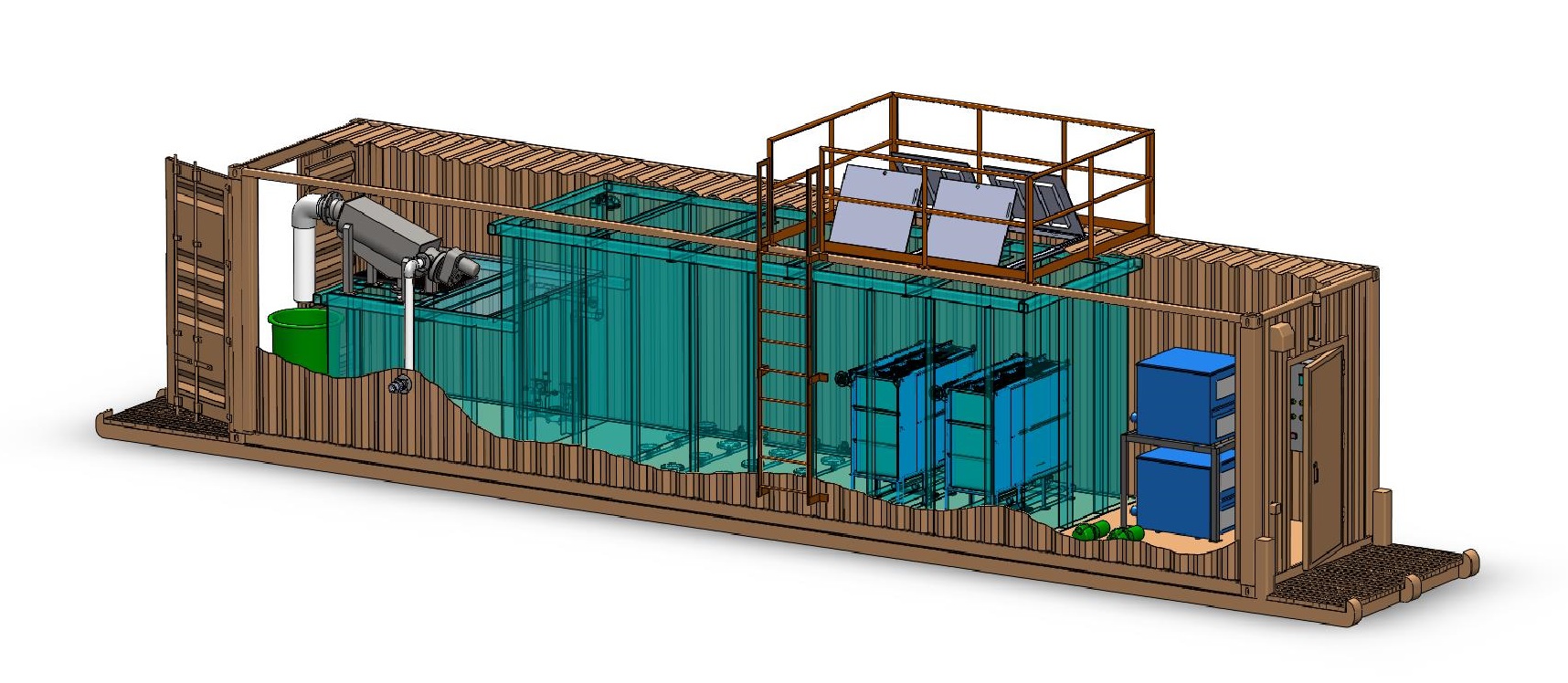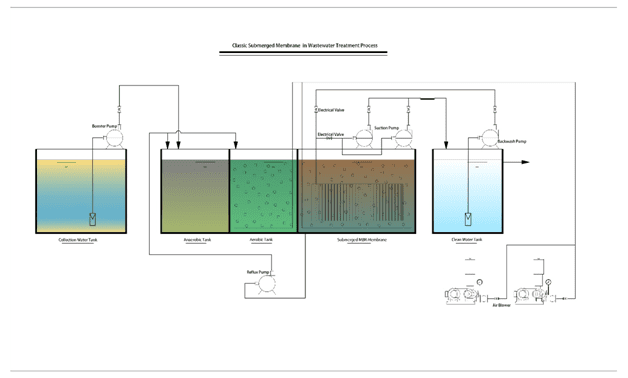Just How Membrane Layer Bioreactors Are Transforming Water Purification Solutions
The development of membrane bioreactors (MBRs) represents a substantial development in the field of water purification, combining biological therapy procedures with innovative membrane layer filtering modern technologies. As worldwide water deficiency escalates, the duty of MBRs in promoting safe and clean water reuse and sustainable water monitoring ends up being significantly crucial.
Summary of Membrane Layer Bioreactors
Membrane bioreactors (MBRs) stand for a significant innovation in water purification innovation, as they incorporate organic treatment procedures with membrane layer filtering. This assimilation enhances the effectiveness of wastewater treatment by making use of bacteria to break down organic contaminants while all at once using semi-permeable membranes to different cured water from suspended solids and virus.
The MBR system usually contains an organic activator where the microbial population metabolizes pollutants, followed by a membrane layer purification device that keeps biomass and allows just clean water to pass through. This double performance results in higher effluent quality contrasted to conventional therapy approaches. MBRs can be operated in both batch and continuous circulation settings, providing adaptability in style and application.
Furthermore, MBRs are characterized by their compact impact, making them suitable for city setups with space restrictions. Membrane Bioreactor. They also make it possible for the recovery of water for reuse, therefore contributing to water sustainability campaigns. While MBR innovation has gained appeal in industrial and municipal applications, its operational intricacies and power demands require mindful factor to consider throughout application. Generally, MBRs go to the center of improving water therapy performance and top quality, showcasing the potential for innovative options in ecological management.
Benefits of MBR Technology
The assimilation of organic therapy with membrane purification uses various benefits for water filtration procedures. One of the main advantages of Membrane layer Bioreactor (MBR) modern technology is its capacity to effectively remove both natural and inorganic contaminants, leading to premium effluent. The membranes act as a physical barrier, avoiding suspended solids and pathogens from passing through, which enhances the overall security and reliability of cured water.
Furthermore, MBR systems need a smaller footprint contrasted to standard therapy techniques, permitting much more efficient room use. This small style is particularly advantageous in city setups where land is restricted. MBRs additionally show operational flexibility, accommodating differing influent high qualities and circulation prices without considerable performance destruction.
Moreover, the process offers enhanced nutrient removal capacities, especially for nitrogen and phosphorus, which are vital for avoiding eutrophication in obtaining waters. The minimized sludge manufacturing connected with MBR technology additionally equates to lower disposal expenses, making it an economical option over time - Membrane Bioreactor. Overall, the benefits of MBR technology placement it as a leading choice for sustainable and cutting-edge water purification systems, resolving both environmental and financial worries
Applications in Water Purification
Applications of Membrane Layer Bioreactor (MBR) technology in water filtration are diverse and impactful, resolving numerous treatment requires across several fields. MBRs efficiently incorporate organic treatment processes with membrane layer filtration, making them suitable for municipal wastewater treatment, industrial effluent administration, and also potable water reuse efforts.
In municipal setups, MBRs are increasingly employed to enhance the top quality of dealt with wastewater, enabling compliance with rigid discharge guidelines and promoting the recycling of water for watering and non-potable uses. Their small style additionally makes them ideal for urban atmospheres where room is restricted.
Industrially, MBR technology is utilized to treat procedure water and wastewater, particularly in fields such as food and drink, drugs, and fabrics. By properly getting rid of impurities and put on hold solids, MBRs assist markets lessen environmental effects while recuperating important resources from wastewater streams.
Additionally, MBRs are getting grip in decentralized water treatment applications, where small-scale systems can be deployed in remote locations or creating regions. This flexibility makes it possible for areas to accomplish sustainable water management solutions, boosting access to clean water while reducing dependence on typical treatment methods.
Study and Success Stories

In one more example, a fabric manufacturing center in Bangladesh adopted MBR technology to resolve its wastewater challenges. The system lowered chemical oxygen need (COD) levels from 1,200 mg/L to much less than 100 mg/L, thus meeting governing requirements and considerably decreasing environmental influence.
The University of Cape Community's MBR installment has proven efficient in dealing with greywater for non-potable reuse on school. This job not only conserves drinkable water however also functions as an educational version for lasting techniques.
Moreover, a seafood processing plant in Norway made use of MBR modern technology to deal with effluents including high levels of organic issue, achieving over 90% toxin removal. These situation research studies highlight MBR modern technology's adaptability and its important function in improving water quality throughout varied applications.
Future of Water Therapy Solutions
As global water shortage and air pollution challenges increase, innovative water treatment solutions are ending up being significantly necessary to make certain sustainable access to tidy water. The future of water treatment lies in the assimilation of advanced innovations that boost the performance and performance of purification procedures. Membrane bioreactors (MBRs) go to the forefront of this advancement, integrating organic therapy with membrane filtering to produce high-grade effluent appropriate for numerous applications.

Emerging fads such as source recuperation from wastewater, consisting of nutrients and energy, will even more transform treatment centers right into environment-friendly centers. Additionally, developments in nanotechnology and membrane materials assure enhanced performance and long life of purification systems.

Verdict
Their function in potable water reuse and lasting water administration highlights their significance in addressing international water deficiency difficulties. Continued study and advancement will certainly additionally enhance the efficiency and adoption of MBR technology, ensuring a durable future for water treatment remedies.
The development of membrane layer bioreactors (MBRs) represents a substantial advancement in the area of water filtration, merging organic treatment procedures with cutting-edge membrane purification innovations. As global water shortage magnifies, the duty of MBRs in helping with drinkable water reuse and lasting water click here for more info management ends up being increasingly essential. They likewise allow the recuperation of water for reuse, thus contributing to water sustainability campaigns.As international water shortage and contamination obstacles magnify, ingenious water therapy remedies are becoming progressively essential to make sure lasting access to clean water. Their role in safe and clean water reuse and lasting water monitoring highlights their relevance in dealing with worldwide water shortage obstacles.